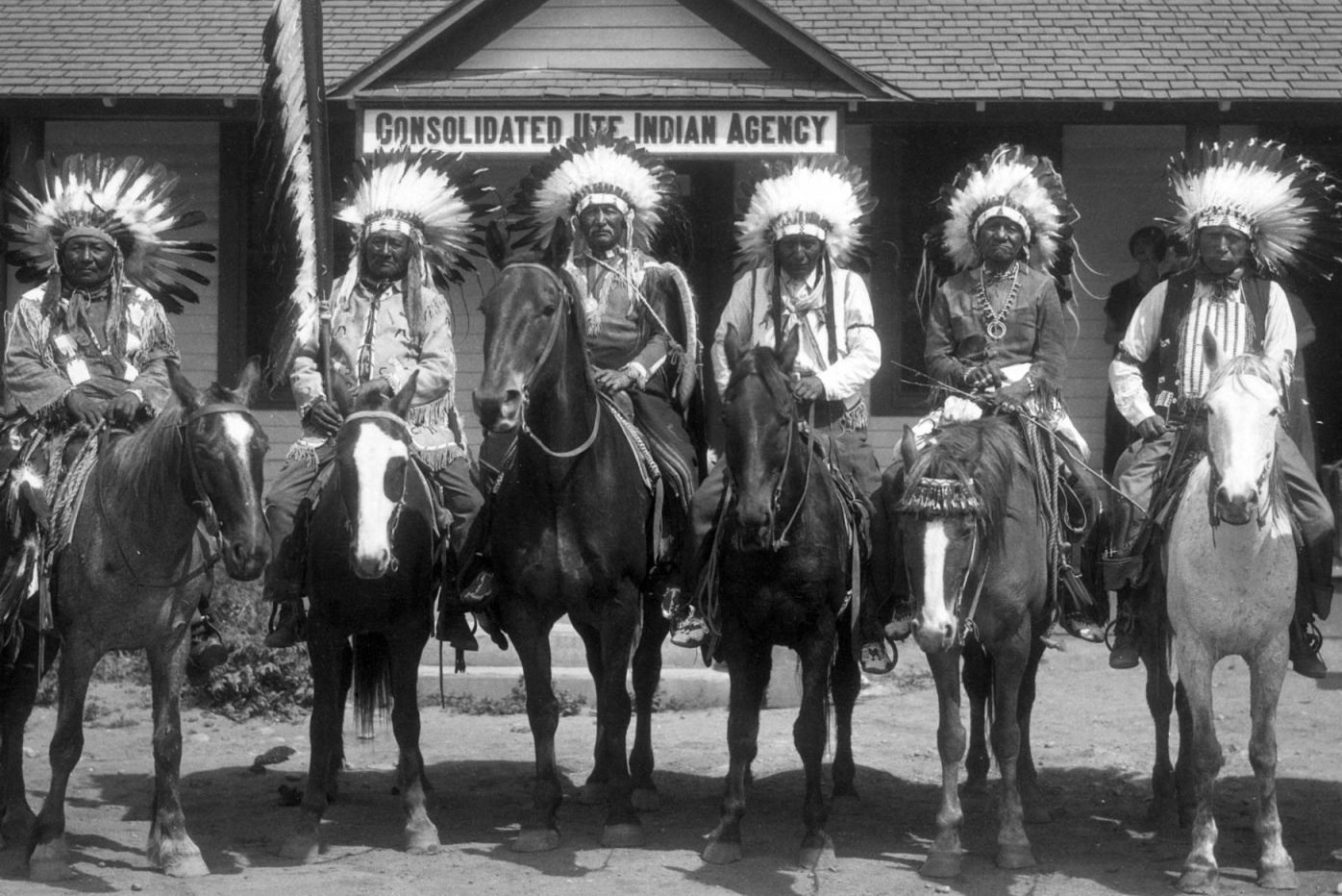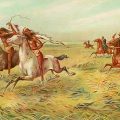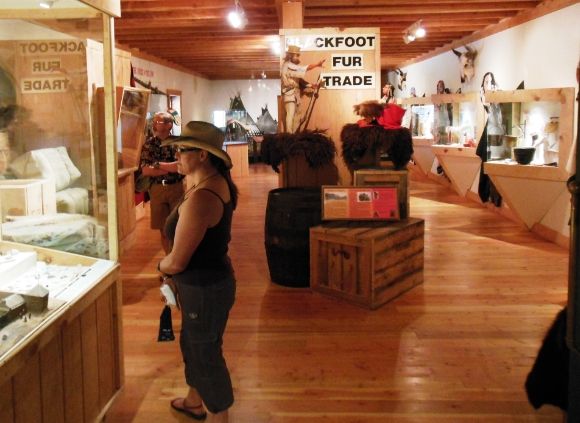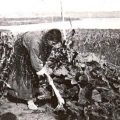
The Ute Indians, for whom the state of Utah is named, had an aboriginal homeland which included much of the present-day states of Colorado and Utah as well as portions of New Mexico and Arizona. The Utes were never a single, politically unified tribe, but were made up of about a dozen politically autonomous bands. The Utes first became aware of the European invasion in the seventeenth century when they began to acquire trade items from the Spanish in New Mexico.
The Spanish moved into New Mexico after their conquest of Mexico and Peru, where they had discovered great wealth in the form of gold and silver. As they moved north, they continued to look for gold and silver and to pursue any rumors about these precious metals.
In 1765, Don Juan María Antonio de Rivera was commissioned to lead an exploring expedition to search for silver deposits in the mountains north of Santa Fe and to verify the existence of the Colorado River and its canyons. The Spanish had heard stories from the Ute about silver deposits and in one instance a Ute man had brought a lump of virgin silver ore to the blacksmith at Abiquiú.
Since the Ute were sensitive to the appearance of Spanish military, the expedition had no armed escort and disguised themselves as traders.
On his first entrada, Rivera followed a trail known as the Navajo War Trail, or the Ute Slave Trail, which runs into present-day Colorado and Utah. Near the present-day town of Bayfield, Colorado they found ruins of an ancient town and what appeared to have been a smelter where gold was separated from ore.
Near present-day Durango, Colorado, they encountered a Ute camp under the leadership of a man they called El Capitán Grande. Here they talked with the daughter of the man who had taken the lump of silver to Abiquiú. She gave them directions to the location of the silver. However, the Spanish explorers were unable to locate the silver source.
With the guidance of a Ute whom they called Capitán Asigare, the Spanish traveled to the Dolores River near the present-day town of Dolores, Colorado. From here, Asigare had them send out a small party to contact the Payuchi Ute under the leadership of Chino. Chino told them that he would show them the river crossing if they returned in the fall.
The Spanish returned to Santa Fe and reported to the governor. In the fall they began the second entrada. They traveled back to Colorado and made contact with Chino. With their Ute guides, the Spanish started out to find the river crossing. Clell Jacobs, in an article in the Utah Historical Quarterly, reports: “It is apparent the Utes wanted to make the trip so difficult and dangerous that Rivera would become discouraged and disheartened, give up his quest, and return to Santa Fe without finding the crossing and without making contact with the people on the other side of the river.”
The Ute guides led the Spanish on a circuitous and difficult route to the camp of the Tabejuache Ute under the leadership of Tonampechi near present-day Moab, Utah. Tonampechi attempted to discourage further exploration, but was unsuccessful. The expedition continued to the Colorado River. Two of the Ute guides were then sent across the river to contact the people on the other side and to invite them to trade. The guides returned with five Sabuagana Ute warriors who told them that some of the people were hiding from the Spanish because they feared Spanish reprisals for having killed some Spanish years earlier.
While the Spanish went back to New Mexico unsuccessful in their attempt to find mineral wealth in Ute territory, for the next two centuries the Utes would continually have to deal with European and American greed for gold and silver.




Leave a Reply